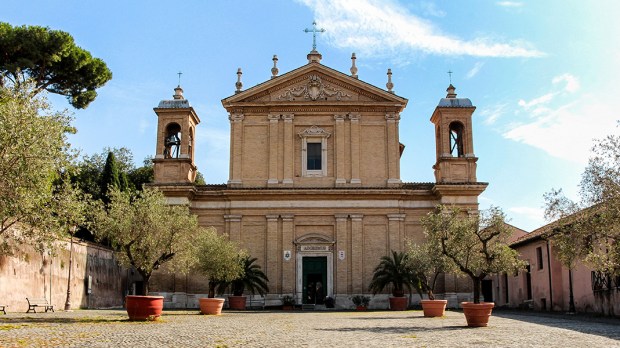Responding to the growth of an immigrant community in Rome and the pastoral needs of Catholics of an Eastern tradition, the Diocese of Rome has granted the Basilica of St. Anastasia on the Palatine Hill to the Syro-Malabar Church.
There are some 7,000 Syro-Malabar Catholics in and around Rome. Originally from the State of Kerala in India, they belong to one of the 23 sui iuris, or self-governing, Eastern Catholic Churches in communion with the Roman Catholic Church.
According to tradition, the Church traces its origins to the preaching of St. Thomas the Apostle in India in the 1st century. As Jesuit Fr. Steven Hawkes-Teeples points out in Eastern Christians and Their Churches, there is no documentation to prove this, although there was trade between the Mediterranean and South India, even in the Roman period.
“In time this Church established links with the Assyro-Chaldean Church and took on their Tradition in the state of Kerala in southern India, which is still their homeland,” Fr. Hawkes-Teeples wrote.
The Assyro-Chaldean Church of which he speaks traces its history to first-century Mesopotamia. It used the Syriac language in its liturgy — thus the “Syro” in Syro-Malabar. The Assyro-Chaldean Church “had a dramatic expansion through Iran, Afghanistan, Pakistan, India, Tibet, and China up until 13th century,” Hawkes-Teeples writes.
The early Christians in India were also called Nazranis, meaning those who follow the path of Jesus of Nazareth, says the website of the Syro-Malabar Church.
When Portuguese explorers arrived in India in the 16th century, Latin-rite bishops took over local church administration, and eventually Western practices were imposed on the Thomas Christians. Some resisted this liturgical colonization and eventually affiliated themselves with Orthodox Churches.
In December 1992, Pope John Paul II raised the Syro-Malabar Church to the status of Major Archiepiscopal sui iuris Church. In 2004, the Holy See granted full administrative powers to the Syro-Malabar Church, including the power to elect bishops. In May 2011 Cardinal George Alencherry was elected Major Archbishop, the first head of the Syro-Malabar Church to be elected by its Synod. Because of emigration, ecclesiastical structures have been established overseas, including in Chicago, Melbourne, Great Britain and Canada. There are altogether over 5 Million Syro-Malabar faithful in India and throughout the world.
The last quarter of the 20th century saw a continuous flow of Syro-Malabar faithful from India to America, Europe and Australia, according to the website of the Apostolic Visitation in Europe, a Church structure set up by the Vatican to care for the faithful of Eastern Catholic Churches who do not have a local bishop. “One fourth of the total number of the Syro-Malabar faithful in general and one third of the young generation, especially qualified ones, in particular are migrants,” the Visitation site says. “They all remained under the Latin jurisdiction until the Diocese of Chicago, Melbourne, Great Britain and Apostolic Exarchate of Mississauga (Canada) [were established]. Numerous Syro-Malabar faithful still continue to be scattered and isolated in different parts of Europe. The intention of the Holy Father Francis in appointing a Visitor Apostolic for the Syro-Malabar faithful in Europe is clear from the instruction given to the Visitor: … ‘In territories where the Eastern faithful do not possess their own hierarchy, the Holy See shows its Solicitude towards them through Visitors and delegates. When these clerics are of papal appointment, they are called Apostolic Visitors. A Visitor or delegate carries out his function in accordance with the procedure laid down ad hoc by his decree of appointment. As a rule, he verifies the state and needs of the faithful, encouraging them, meeting with the local bishops, and making a report with proposals to the Congregation for the Eastern Churches.'”
The Apostolic Visitor to the Syro-Malabar faithful in Europe is Bishop Stephen Chirappanath.
During their 2019 ad limina visit to the Vatican, Syro-Malabar bishops asked Pope Francis to provide a church for the growing community in Rome, Fr. Abraham Kavilpurayidathil, public relations officer of the Syro-Malabar Church, told the Union of Catholic Asian News (UCAN) July 20. Cardinal Angelo de Donatis, vicar general of the Diocese of Rome, issued a decree on July 8 assigning Santa Anastasia to the Church.
Pope Francis showed “special interest” to designate a church for the community “without much delay,” said a July 19 statement from the Syro-Malabar Church.
Cardinal Alencherry will appoint a priest as chaplain to be based at the basilica, UCAN reported.
“It is a matter of great joy that the Kerala community has got a church assigned to us in Rome,” Latin-rite Bishop Alex Vadakumthala of Kannur told UCAN. “Now our people can gather together in their church and offer prayers in their mother tongue — Malayalam.”
According to UCAN, the basilica is one of the oldest churches and one of the oldest minor basilicas in the world. It was built in the 4th century during the reign of Emperor Constantine. Until the end of the 7th century, several popes celebrated their Christmas Masses at the basilica. St. Jerome is said to have preached in the basilica.

